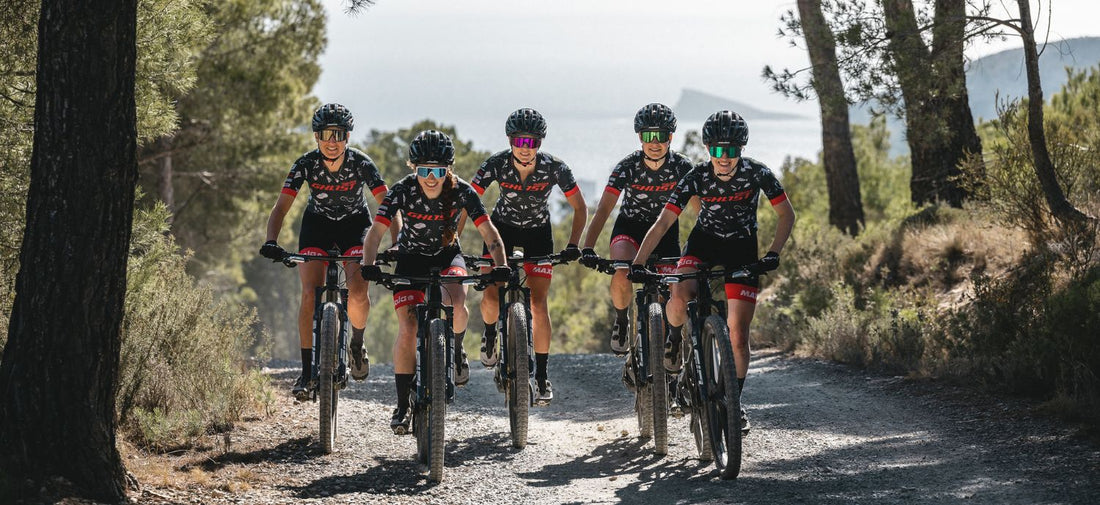
Buttock pain when cycling: Causes, prevention & relief
Have you ever felt a nagging ache deep in your buttock during or after a ride? You're not alone. Buttock pain is one of the most common issues cyclists face—whether you're riding outdoors or indoors on a stationary bike. The good news? With the right strategies, you can eliminate the pain and ride more comfortably.

Common Causes of Buttock Pain
Poor Bike Fit & Riding Position
An improper bike fit can lead to saddle pressure points, poor weight distribution, and unnatural posture. These misalignments put stress on your glutes and surrounding muscles.
Piriformis Syndrome
This deep gluteal muscle can tighten or become inflamed, pressing on the sciatic nerve. The result: buttock pain that may shoot down your leg.
Poor quality and unsupportive insoles
Friction, pressure, sweat, and long hours in the saddle can lead to painful skin irritation, clogged follicles, or even boils.

Pudendal Nerve Compression
Sitting too long on a narrow or misaligned saddle can compress the pudendal nerve, causing burning sensations, tingling, or numbness in the buttocks or perineal area.
Weak Glutes or Tight Hamstrings
Muscle imbalances, especially weak glutes or tight hamstrings, can cause overcompensation and discomfort while pedaling.
How to Prevent Buttock Pain When Cycling
|
Problem |
Prevention Strategy |
|
Incorrect saddle height or tilt |
Get a professional bike fit to ensure optimal saddle position and handlebar reach. |
|
Wrong saddle shape |
Use a saddle that matches your sit bone width. Look for options with cutouts or pressure-relief channels. |
|
Friction and sweat |
Wear padded, high-quality cycling shorts and apply chamois cream to reduce skin irritation. |
|
Muscle imbalance |
Incorporate glute-strengthening exercises and dynamic stretches in your weekly routine. |
|
Lack of movement on long rides |
Shift positions frequently and stand on the pedals every 10–15 minutes to improve circulation. |
Best Practices for Relief and Recovery
- Adjust Bike Fit: Fine-tune saddle height, fore-aft position, and tilt to relieve pressure points.
- Stretch & Strengthen: Focus on hip mobility, piriformis stretches, and glute activation to prevent muscle overload.
- Use ice or heat: Apply ice to reduce inflammation after a ride, or use a heat pack to relax tense muscles.
- Choose the Right Saddle: Saddles with anatomical relief zones or flexible shell designs can significantly reduce nerve compression.
- Rest and Cross-Train: Give your body time to heal. Activities like swimming or walking can help maintain fitness without aggravating the pain.

Conclusion
Buttock pain when cycling can result from poor bike fit, muscle imbalances, nerve compression, or prolonged saddle pressure. Fortunately, with the right adjustments—such as a professional bike fit, a saddle that matches your anatomy, regular stretching, and smart riding habits—you can significantly reduce discomfort and ride more efficiently.
For cyclists who want to go a step further, performance cycling insoles like SOLESTAR insoles, can make a noticeable difference. By improving foot alignment, these insoles help keep your knees, hips, and glutes working in harmony, reducing unwanted strain and promoting a more balanced pedal stroke. Over time, this not only boosts comfort but also supports long-term joint and muscle health.

